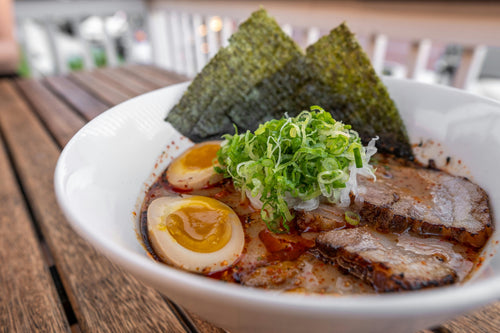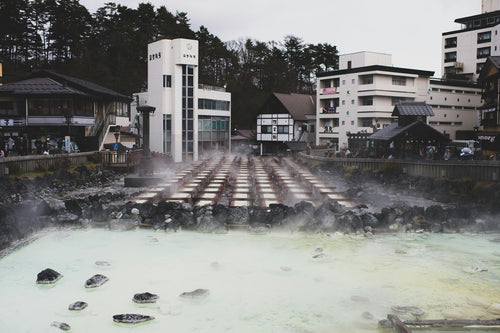
Beginner’s Guide to Japan Travel: Preparations & Key Tips
Traveling to Japan for the first time is an exciting experience filled with unique cultural encounters, incredible food, and beautiful landscapes. To help make your trip as smooth and enjoyable as possible, this guide provides essential preparations, key travel tips, and insights into Japanese customs. From budgeting to understanding basic etiquette, these tips will prepare you for a memorable journey in Japan.
Contents
1. Visa and Entry Requirements
6. Japanese Etiquette and Customs
1. Visa and Entry Requirements
Depending on your nationality, Japan may require a tourist visa. Citizens from several countries, including the U.S., Canada, the U.K., and the EU, can enter Japan visa-free for short-term stays, typically up to 90 days. Be sure to check entry requirements in advance, as these may change. When you arrive, you will also receive a “Landing Permission” sticker in your passport, allowing you to travel within the country.
2. Budgeting and Currency
The Japanese currency is the yen (¥), and cash is widely used in many places. Although credit cards are accepted in major stores and restaurants, it’s a good idea to carry cash, especially when visiting smaller establishments or rural areas. Budgeting carefully can enhance your trip:
- Accommodation: Budget accommodations like hostels or capsule hotels cost around ¥3,000–¥6,000 per night, while mid-range hotels average ¥10,000–¥20,000 per night.
- Food: Affordable meals, such as ramen or convenience store bento boxes, can be as low as ¥500, while restaurant meals range from ¥1,000 to ¥3,000 per person.
- Transportation: If you plan to travel around the country, consider purchasing a JR Pass for unlimited train travel over a set number of days.
3. Accommodation Options
Japan offers diverse accommodation options to fit different budgets and travel styles. Budget travelers can consider capsule hotels or hostels, which are affordable and often centrally located. For a unique experience, ryokan (traditional inns) offer tatami rooms and futon bedding, typically including dinner and breakfast. Mid-range hotels, Western-style hotels, and vacation rentals are also widely available in major cities.
4. Transportation
Japan has one of the most efficient public transportation systems in the world. The Japan Rail (JR) system covers the entire country, and the JR Pass offers excellent value for travelers planning to visit multiple cities. Within cities, subways, buses, and trains are reliable and easy to navigate with a prepaid IC card (such as Suica or Pasmo), which can be used nationwide. Taxis are available but can be expensive compared to public transit.
5. Language and Communication
Japanese is the primary language spoken, and while English is often understood in major cities, it’s less common in rural areas. Learning a few simple Japanese phrases can be helpful. Basic phrases like “Arigatou” (Thank you), “Sumimasen” (Excuse me), and “Konnichiwa” (Hello) are appreciated and show respect. Many signs in transportation hubs are in English, but it can be helpful to use translation apps or have destination addresses written in Japanese for clarity.
6. Japanese Etiquette and Customs
Japan has unique social customs and etiquette, so observing local practices will ensure a respectful visit. Key customs include:
- Shoes: Shoes are removed when entering homes and some traditional accommodations. Slippers are often provided for indoor use.
- Public Transportation: Keep conversations quiet, and talking on the phone is discouraged on trains and buses. Priority seating should be given to the elderly, pregnant, or disabled passengers.
- Onsen Etiquette: If visiting an onsen (hot spring), wash thoroughly before entering communal baths, and do not bring towels into the bath.
7. Japanese Food and Dining Tips
Japanese cuisine offers a wide range of delicious dishes, from sushi and ramen to tempura and kaiseki. Many restaurants display plastic food models, making it easy to understand the menu. Some tips to enhance your dining experience:
- Try conveyor belt sushi (kaitenzushi) for an affordable and fun meal.
- Visit izakayas (Japanese pubs) for casual dining and sampling multiple dishes.
- Payment is typically made at the register rather than at the table.
Be mindful that tipping is not customary in Japan; excellent service is expected as the standard.
8. Essential Packing List
Packing wisely can help you prepare for Japan’s varied climates and ensure a comfortable trip. Essential items include:
- Comfortable Walking Shoes: Expect to walk a lot, as many attractions are best explored on foot.
- Universal Power Adapter: Japan uses type A and B plug types with a 100-volt standard.
- Portable Wi-Fi or SIM Card: Staying connected is helpful for maps, translation, and general communication.
- Weather-Appropriate Clothing: Japan experiences four distinct seasons, so pack accordingly. Lightweight clothing for summer, and layers for winter travel.
Japan offers an exciting blend of modern convenience and rich tradition, making it an ideal destination for first-time visitors. With this beginner’s guide, you’ll be well-prepared to navigate Japanese customs, enjoy the unique cuisine, and immerse yourself in the country’s fascinating culture. Enjoy your journey to Japan!
分享
You may also like
-

東京 10 家最適合舞蹈和音樂愛好者的夜總會
東京的夜生活以其多樣性和活力而聞名,夜總會的範圍從充滿活力的舞池到專屬的 VIP 休息室。東京的俱樂部提供從電子音樂到嘻哈音樂和日本流行音樂等各種音樂,可以滿足各種類型的夜貓子的需求。以下是東京 10 家最佳夜總會的指南,非常適合度過...
-

探索日本卡拉 OK 文化:8 個最佳唱歌地點
卡拉 OK 是日本文化不可或缺的一部分,為朋友、家人甚至同事提供了一種有趣的放鬆方式。卡拉OK(意為「空管弦樂團」)起源於日本,現已發展成為適合所有年齡層和背景的全民消遣活動。日本卡拉 OK 場所以其私人房間、先進的音響系統和豐富的歌...
-

日本哪裡可以體驗拉麵製作課程
拉麵是日本最受歡迎的菜餚之一,具有無數的地域風格和風味,吸引來自世界各地的美食愛好者。從福岡濃鬱的奶油豬骨到北海道清淡鹹味的鹽味,拉麵的種類繁多。在日本體驗一碗拉麵本身就是一種享受,但學習自己製作拉麵可以讓您更深入地欣賞這道標誌性菜餚...
-

什麼是溫泉?歷史、福利和禮儀指南
溫泉是日本備受推崇的溫泉文化,它獨特地融合了放鬆、美景和根深蒂固的傳統。溫泉以其富含礦物質的治療水、寧靜的山地環境和具有重要文化意義的儀式而聞名,為遊客提供了寧靜的休憩場所,並與日本的自然景觀有著深厚的聯繫。本指南將帶您了解溫泉文化的...




